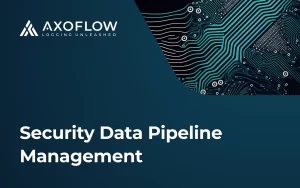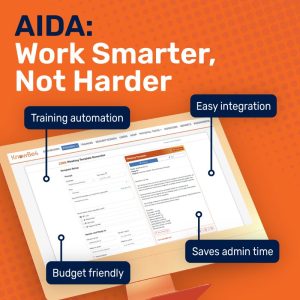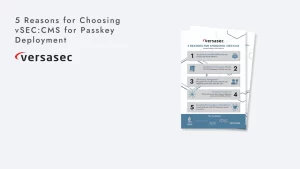
API monetization can significantly drive business growth by curating and monetizing your APIs in a marketplace designed to simplify and enhance API adoption.
However, not all API marketplaces are created equal. To effectively drive API monetization — which translates to revenue growth — you must bundle and create digital products that simplify and improve their consumption. Getting these elements right is key to success.
Step #1: Link Multiple API Products to Create a Monetizable Business Service
When organizations view APIs as mere technical interfaces, the focus is on functionality. However, adopting a product-oriented perspective shifts the emphasis to user experience.
Consider this: What do you need to make your APIs fit your target market? One critical factor is the bundling of APIs. Developers typically create APIs from a logical set of linked digital assets. This linkage provides a more robust solution to consumers and streamlines management.
Connecting your marketplace APIs to business objectives helps you develop a linking strategy. Think about how consumers will use your APIs and then develop a relevant value proposition and documentation.
For instance, an insurance company might combine internal APIs for policyholder information, claims history, and risk assessment. Linking these APIs creates a comprehensive product for enhanced underwriting and minimized risk. An API marketplace can showcase this product to fintech providers and loan companies.
The goal is to link complementary APIs that work together. In an API marketplace, you can group these API products by domain or target audience for easy discovery.
Insights into API usage make this task easier. This was the case for BNP Paribas Personal Finance, a leading provider of consumer credit. With a complete view of all their APIs and usage information, they could support their insights with hard data, propelling their API monetization strategy.
Step #2: Create and Manage API Products with Subscription Plans for Monetization
API monetization models can take various forms. The most obvious model is direct monetization, where users pay through defined API product subscription plans.
Alternatively, there are indirect monetization models where APIs are free to use but help improve company market presence and business revenue.
In a pay-to-play scenario, you have several options for an API pricing strategy. A standard option involves consumers paying a base price for a guaranteed quota. Another option is pay-per-use, where consumers pay a fixed amount for each transaction without a limit. Standard subscriptions are suitable for predictable API usage, while pay-per-use is ideal for variable API usage, such as seasonal spikes.
Flexible API product subscription models add value. A tiered pricing structure lets you offer services at various price points based on transaction volume, helping expand your marketplace audience and increase revenue opportunities.
For example, a tiered subscription might look like this:
- Basic Plan: Up to 1,000 transactions per month for $50
- Standard Plan: Up to 10,000 transactions per month for $200
- Premium Plan: Unlimited transactions for $500
By implementing these strategies, you can effectively monetize your APIs, driving growth and maximizing the value of your digital assets:
| # of transactions | Unit price | Flat rate | |
| Tier 1 | 1-500 | $2 | none |
| Tier 2 | 501-5,000 | $1 | $10 |
| Tier 3 | unlimited | $0.5 | $20 |
While thinking about these plans, consider what the workflow looks like after someone subscribes. Are consumers granted access automatically, or does there need to be a workflow for manual approval? Whatever the case, the goal is to make subscribing to marketplace APIs as intuitive as possible.
Step #3: Publish APIs to your marketplace to speed up adoption and time to market
While an API portal treats APIs as technical interfaces, an API marketplace views them as business assets. It’s a platform where you connect APIs and expose them to internal and external audiences for consumption.
To effectively promote your APIs, you need a well-designed and well-developed infrastructure.
- Are APIs arranged in a way that makes them easily discoverable?
- When a consumer clicks on an API product, is there comprehensive documentation about its value and technical implementation?
A marketplace user experience should address these questions, ensuring consumers can locate and start using these digital products quickly.
A private marketplace offers this kind of flexibility. While a public API marketplace allows you to publish and charge for APIs, a private API marketplace functions more like a branded storefront. It lets you align the marketplace’s look and feel with your company and gives you greater control over how you present and promote APIs. This capability can expedite marketplace monetization.
With a universal management platform supporting your API marketplace, you’ll gain visibility into key metrics. You can access data on API usage and performance insights. Analyzing these details helps you continuously refine and improve your digital products and API monetization strategy for the future.
Start capitalizing on API monetization
Research indicates that the API economy remains a key focus for organizations, with API monetization growing by 16% in the financial services sector alone.
By implementing these three strategies alongside the Amplify Enterprise Marketplace, you position yourself for success. Our marketplace consolidates all your APIs into a single location, enhancing the consumer experience.
As an API provider, you gain automated discovery of all your APIs, empowering faster product development. Concurrently, consumers benefit from accessing validated, documented, and secure API products swiftly, driving the uptake of your digital initiatives.
A leading pharmaceutical company, transitioning from standalone APIs to clearly defined, packaged APIs within the Amplify Enterprise Marketplace, attests to this: “We believe this approach will accelerate API adoption significantly.”
About DT Asia
DT Asia began in 2007 with a clear mission to build the market entry for various pioneering IT security solutions from the US, Europe and Israel.
Today, DT Asia is a regional, value-added distributor of cybersecurity solutions providing cutting-edge technologies to key government organisations and top private sector clients including global banks and Fortune 500 companies. We have offices and partners around the Asia Pacific to better understand the markets and deliver localised solutions.










